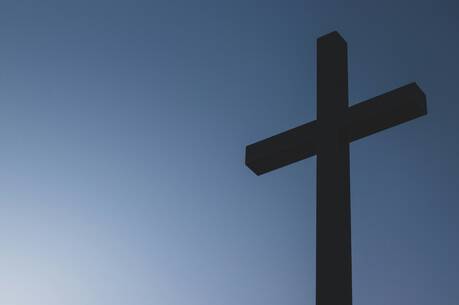There's Something About Mary
Many people, even some with extensive Catholic education, confuse the immaculate conception of Mary and the virginal conception of Jesus. According to the doctrine of the Immaculate Conception, Mary was conceived without original sin and so was prepared to be the mother of Jesus. In this respect Mary is unique among humans. She is different from the rest of us.
The story of the “fall” or “original sin” in Genesis 3 explains why there is sin and death in the world. It describes why and how our first parents were enticed into disobeying God’s commandment and ate from the fruit of the tree in the middle of the Garden of Eden. The serpent assured them that no harm would come to them, that they would become like God, and that they would know good and evil. The catastrophic results of the disobedience of Adam and Eve included shame at being naked, fear of snakes, pain in child bearing, the need for physical work, and death (“You are dust, and to dust you shall return,” 3:19).
Luke’s account of the annunciation is also read on the Fourth Sunday of Advent. Then I will focus on what this text suggests that we have in common with Mary. What makes Mary different comes out especially in the angel Gabriel’s words of greeting to her: “Hail, full of grace! The Lord is with you.” Mary is the special object of divine favor (“full of grace”), and so it was appropriate for her to become the mother of the Messiah. This is where the immaculate conception of Mary and the virginal conception of Jesus intersect. Because Mary alone was without original sin, she alone was worthy to bear the child conceived by the Holy Spirit, the child called the Son of God. This is the “something” that is different about Mary.
The passage from Ephesians is part of the great benediction or blessing at the beginning of the letter. It reflects on the effects of Jesus’ life, death and resurrection for all those who are in Christ: election, holiness, divine favor and so forth. Where sin abounded through Adam, grace has superabounded through Christ. In the context of the Immaculate Conception, what can be predicated about all those redeemed through and in Christ can also be predicated pre-eminently and proleptically (that is, by way of anticipation) about Mary.
Just as in her sin Eve became the mother of all the living, so in receiving the privilege of her immaculate conception Mary became the mother of all those redeemed through her son Jesus. While Mary is different from us, we can become like her through Christ.
This article also appeared in print, under the headline “There's Something About Mary,” in the November 28, 2005, issue.







